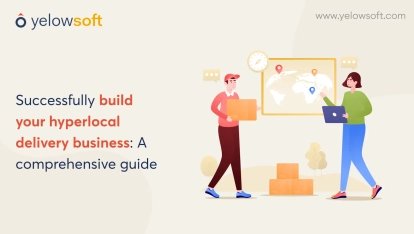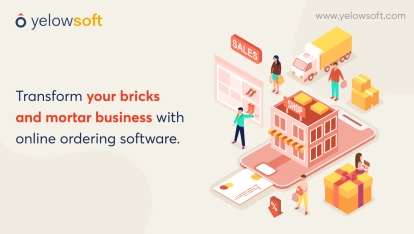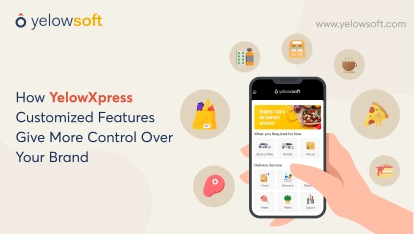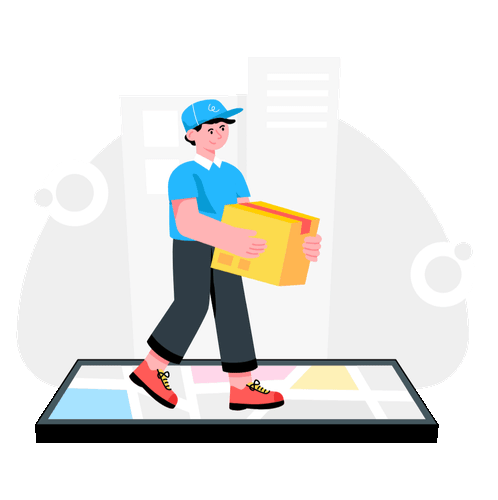Quick Summary
The need for delivery on demand has given birth to many new businesses and has transformed many existing businesses today. It is because of the demand for convenience - getting orders instantly and at the doorstep. This blog talks about the overview of on-demand delivery, how it works, its benefits and challenges, use cases, best on-demand delivery service providers, types of on-demand delivery apps, and FAQs.
What is on-demand delivery?
On-demand delivery is also known as ‘dispatch delivery or last mile delivery. ’ It refers to a service that provides fast and convenient delivery of products or goods to customers.
With on-demand delivery service, customers can buy the product of their choice without waiting in a long queue. They can also track their order in real time.
This type of delivery service is commonly used to provide a seamless and convenient shopping experience for their customers by
- Retailers
- Restaurants
- Grocery stores
- Food and beverages
- And other businesses
On-demand delivery services often utilize technology such as on demand delivery software or mobile apps to make the delivery process simple and efficient.
Facts and future of on-demand delivery
The on-demand delivery market is growing rapidly. The statistics show a significant increase in demand and adoption.
-
The global last-mile delivery market size was valued at USD 143.8 billion in 2021 and is expected to generate USD 428.9 billion by 2031. (Straits Research)
-
The Online Food Delivery market revenue is projected to reach US$1.22tn in 2024.
-
The Grocery Delivery market volume is projected to be US$0.79tn in 2024. And so, growth is expected for the rest of the industries as well. (Source for both these stats - Statista)
This growth is driven by factors such as the rise of e-commerce, the desire for convenience, and the increasing availability of mobile apps and technology.
Now that you know about on-demand delivery and the latest statistics, let’s understand how on-demand demand delivery works.
How does on-demand delivery work?
On-demand delivery works digitally and is accessed through mobile applications. In simple words, delivery done by the drivers on the demand of the customers (online order) is on-demand delivery.
Your customers and drivers are typically connected through mobile apps.
To better understand, let’s see how on-demand delivery works.
-
Your customer will place an order through the mobile app (it could be your food ordering app)
-
Your driver then receives the order request and picks up the item(s)
-
Your driver follows the map route in the app and delivers the item(s) to your customer’s requested location.
-
Finally, your customer receives his item(s) and provides feedback on the service based on the experience.
You now know how on-demand delivery works. Now, you should know what benefit you can leverage by offering on-demand delivery to your customers.
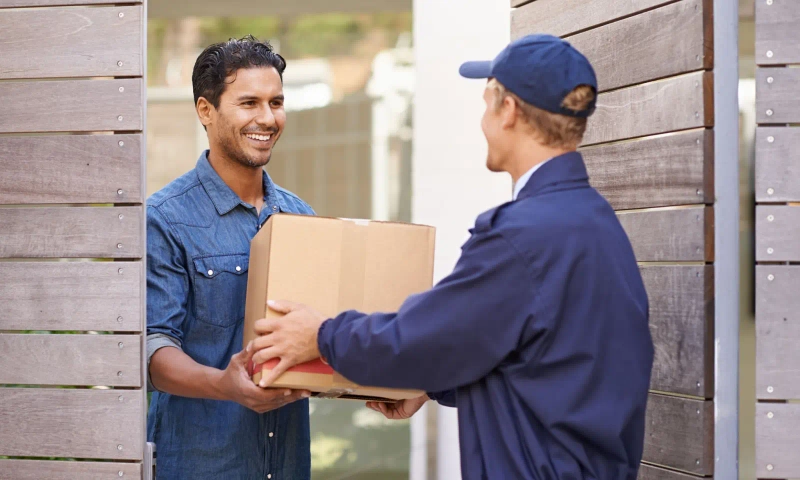
Benefits of on-demand delivery
With software for delivery management, on-demand delivery services offer numerous benefits to both consumers and businesses. Here's an overview of some of the key advantages:
-
Convenience and speed: From ordering to delivery on time, your customers can receive their orders within hours or even minutes. This service provides comfort and instant gratification.
-
Time-saving: Your customers just have to order from their mobile device without waiting in the long queues in the stores.
-
Reach more customers: Consumers who live in remote areas can easily access goods and services they might not have been able to obtain otherwise.
-
Enhanced efficiency: As a business owner, you can streamline your delivery process by leveraging technology like ordering and delivery solutions and can optimize your operations, reduce costs, and improve customer satisfaction.
-
Market dominance with competitive edge: In today's fast-paced world, consumers value convenience and speed the most. By providing on-demand delivery services, you gain this dominance.
“Getting delivery on-demand is a favorite reason for today’s customers to keep shopping as they get their goods delivered at their selected location, date and on time.”
Possible challenges of on-demand delivery
Despite many benefits, on-demand delivery comes with some challenges as well. They are;
-
Costly: You have to pay numerous drivers high commissions to meet customer demands and invest in specialized technology and delivery management software.
-
Complex to manage operations: You have to establish or develop dedicated on demand software solutions that allow you to manage the drivers, orders, deliveries, and more from one place.
-
Ensure top quality: Maintaining quality standards becomes a significant challenge. You have to ensure the quality of your goods remains intact throughout the delivery process.
Industry and use cases of on-demand delivery
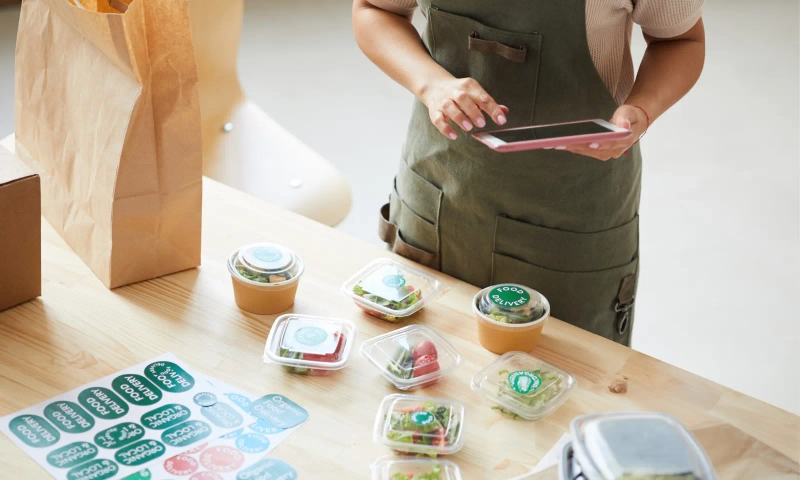
Anything that can be bought online can be delivered online. The on-demand delivery services are used in various industries that include;
Food and Beverage: Restaurants, grocery stores, bakeries, pizza shops, and food delivery companies use on-demand delivery to deliver their customers orders.
E-commerce: Online retailers like Amazon, Flipkart, etc, use on-demand delivery services to fulfill their customers' demand and provide delivery based on their location and product type.
Healthcare: Pharmacies and medical stores use on-demand delivery to deliver medicines and hospital equipment to hospitals, clinics, and consumers.
Transportation: In the transportation industry, on-demand delivery services are used to deliver goods, packages, and other items efficiently across various locations.
Best on-demand delivery service providers
There are numerous on-demand delivery service providers. Each has its own strong and weak points. Here are some of the best on-demand delivery service providers;
- Uber Direct
- Deliveroo
- DoorDash Dive
- Wolt
- UberEats
Types of on-demand delivery apps
On-demand delivery apps can be categorized into two main types. First-party and third-party on-demand delivery apps. Below, you will explore each of them in brief.
First-party on-demand delivery apps
These delivery on demand apps are usually ready to use white label delivery apps. You can rebrand it with your brand name, add your logo, color and more as per your choice. You have direct control over the delivery process and customer experience.
Third-party on-demand delivery apps
UberEats and Grubhub are a couple of examples of it. They will have orders to drive to you and their drivers to pick and deliver to the customer.
Read More: A step-by-step guide to setting up online ordering for restaurants in 2025
Which on-demand delivery app is best for your business
When choosing an on-demand delivery app for your business, it's essential to consider various factors to ensure the best fit. Here's a comparison table to help you make an informed decision:
| Feature | First-party online delivery | Third-party online delivery |
| Branding | You can customize and rebrand the white label software solution with your brand’s logo, colors, and more. | Limited branding opportunities. It has its own user interface and experience. |
| Customer data | You get complete access to all your customer data. | Limited or no access to customer data. |
| Integration | This can be integrated with your existing systems like POS, inventory management, accounting software, and more. | You may or may not be able to integrate as it comes with limitations. |
| Ordering experience | Easily customize menu design, ordering flows, and additional features. | Limited customization options. |
| Customer relationship | Interact directly with your customers. | Limited direct customer interaction. |
| Reporting and analytics | You get detailed reporting and analytics tools to make data-driven decisions. | Limited or no access to reporting and analytics. Means no access to customer data. |
| Cost | Fixed subscription fee or a percentage of sales. It's a pay-as-you-go. And free with basic features. | A flat monthly fee or a percentage of sales is charged by the platform. |
| Promotions and loyalty | Have complete control over your running promotions, discounts, and loyalty programs. | Limited ability to run promotions or loyalty programs. |
| Scalability | Scale as you grow as you can accommodate increased order volumes and additional outlets or locations. | Scalable to accommodate growth. Charges extra fees. |
| Support and training | Dedicated customer support and training resources. | Limited customer support and may not get on-time response. |
The choice between a first-party or third-party on-demand delivery app depends on your business's specific needs, budget, and overall strategy.
It's advisable to carefully evaluate both options and weigh the pros and cons before making any decision.
Conclusion
On-demand delivery has revolutionized the way consumers receive goods and services. It offers convenience, speed, and accessibility like never before. As we move further into 2025, the on-demand delivery service is expected to grow continuously.
On-demand delivery is driven by technological advancements. It is changing consumer expectations and the ever-increasing demand for instant gratification.
Local businesses across various industries are recognizing the benefits of adopting on-demand delivery services. They are gaining a competitive edge, improving efficiency, and enhancing customer satisfaction.
By leveraging the right on-demand delivery solutions, businesses like yours can stay ahead of the curve and meet the evolving needs of your customers in this fast-paced digital world.
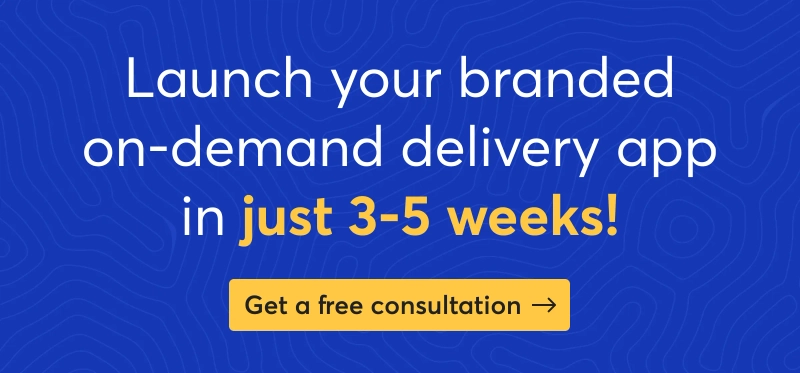
FAQ's
The core difference between on-demand delivery and traditional delivery is the speed and convenience. On-demand delivery services are used to typically deliver goods within hours or even minutes of placing the order (based on the product type and location). On the other hand, standard delivery can take several days or weeks.
The answer could be yes or no. However, on-demand delivery services can be more expensive than traditional delivery services as it requires technology and specialized logistics operations. Furthermore, once the process is streamlined, the on-demand service can become cheaper than traditional delivery services.
On-demand delivery services can help your business streamline your logistics operations and reduce costs. It also provides a competitive edge through unique and convenient service.
Challenges that are linked with on-demand delivery are that it’s costly, complex to manage operations, and tough to ensure quality standards. But these challenges are experienced only in the short term. In the long term, these challenges turn into opportunities.

